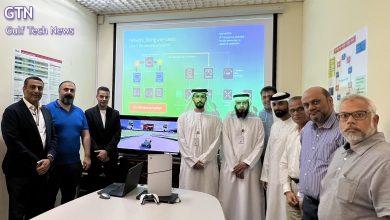SD-WAN: Delivering a positive user experience is key ,

Steffen Gienger, Vice President Sales, Head of Service Provider Europe & CALA, Juniper Networks
Sherif Rezkalla, VP Portfolio, Head of Business Networks, Deutsche Telekom
It is often assumed that an organization knows exactly who and what is using its WAN. But it is not until the flows and sessions are analyzed that an organization is truly able to understand who the actual users are and what their use cases really consist of. Over time, network usage oscillates and alternates between machine-based agents and user-initiated traffic. As the WAN itself is a finite resource, congestion starts to hamper the user experience as traffic grows.
Congested paths are then unable to meet the demands of real-time communications, which has always been a challenge for WAN service delivery. Previous generations of SD-WAN solutions have provided mostly static implementations that use quality of service markings and queueing strategies, but they can rarely dynamically influence and steer individual sessions to improve a user’s flagging experience in real time. Thus, session awareness is a crucial component of modern SD-WAN solutions. It offers the best fidelity view of a network from the user’s perspective. Sessions are temporal and involve specific application flows whose quality can differ greatly (due to factors such as capacity, delay, congestion, and intermittent outages).
By taking a more holistic and unified view, tied with a fine-grained capability to route traffic flows, some SD-WAN solutions can automatically elevate, demote, or selectively steer these sessions based upon criteria such as service-level objectives. Individual sessions have become the ultimate currency for network operators to deliver superior user experiences.
A combination of technologies enhances the user experience
SD-WAN is as much a concept as it is an abstraction layer. It is a networking approach that has varying architectures, implementations, and goals but is focused on improving all facets of WAN service delivery. SD-WAN also makes a WAN more malleable, programmable, and intelligent. This approach facilitates new functionality, improved service delivery, and reduced costs – thereby also enhancing the user experience. Additionally, SD-WAN plays a role in evolving models of infrastructure management, monitoring, and security. Whether to simplify orchestration, add more programmability to a WAN, or deliver a new overlay virtual network, SD-WAN means different things to different people.
SD-WAN architecture and its key benefits
Thus, SD-WAN comes with varied architectures. It often entails a centralized physical, virtual, or cloud-based controller. Although organizations may have differing goals for deploying an SD-WAN, they generally seek a blend of common business and technical requirements:
• Simplified operations with greater network resilience
• More intelligent pathing, orchestration, and agility
• The ability to embed business logic and policy deep into the network
• Reduced transport costs and optimized resource utilization
• Better observability and application analytics
• Application acceleration (increasingly for SaaS applications sensitive to latency, loss, and jitter)
• Increased security with fine-grained policy control
• Improved user experience and better quality of service
• Programmability, wider automation, and more modern APIs
One of the original goals of SD-WAN was to separate the data and control plane to facilitate higher-order logic and intelligence. Yet there still is no single unified SD-WAN network architecture. There are, however, common building blocks and boundaries that constitute SD-WAN as a conceptual delivery model. It can be thought of as a platform that may engage with, augment, or displace elements of a WAN and its operation, by either integrating with or replacing network functions in the data and control planes. SD-WAN designs and solutions also typically play a major role in network provisioning, orchestration, management, and monitoring, while some deliver far more dynamic and granular capabilities for performance, policy, and security requirements.
Even with differing business models and use cases, SD-WAN commonly includes a centralized controller and either a full or partial mesh (versus a traditional hub-and-spoke topology). Although an SD-WAN may leverage an underlying traditional or hybrid WAN to build its new transport overlay, it is an OTT (over-the-top) model that enables the most rapid deployments and lifecycle management, thus avoiding costly rip and replace upgrades.
As SD-WAN is not an explicit protocol or technology, many implementations of SD-WAN overlay make use of disparate underlying wired and wireless transports or technologies, including but not limited to SD-WAN over MPLS VPNs, DSL, and 5G/LTE (or other wireless backhauls).
SD-WAN should also integrate technologies such as artificial intelligence (AI) or machine learning (ML) as they can deliver a high value throughout the networking domain. Both can offer rapid and actionable insights into graphs and their dependencies, including everything from identifying complex root causes to providing better interfaces to navigate and manage increasing network complexity.
MSPs are key to delivering the user experience
However, with all the benefits of SD-WAN it caalso provides challenges, often in the form of adding complexity to the network. Savvy IT teams are turning more and more towards an outsourced model for their SD-WAN implementation. An MSP (is able to plan and implement an SD-WAN based on a company’s specific requirements based on their expertise.
Their MSP of choice is able to implement an SD-WAN solution that can maximize profitability and reduce overhead spent on managing and optimizing solutions and onboarding new customers. The chosen solution must be able to expand to meet as many customer use cases as possible, including use cases that aren’t even dreamt of at project inception. Many enterprises today are learning that MSP delivered SD-WAN is the perfect choice for a SD-WAN, that removes the burden of complexity from IT teams and provides a greater user experience than ever before.





